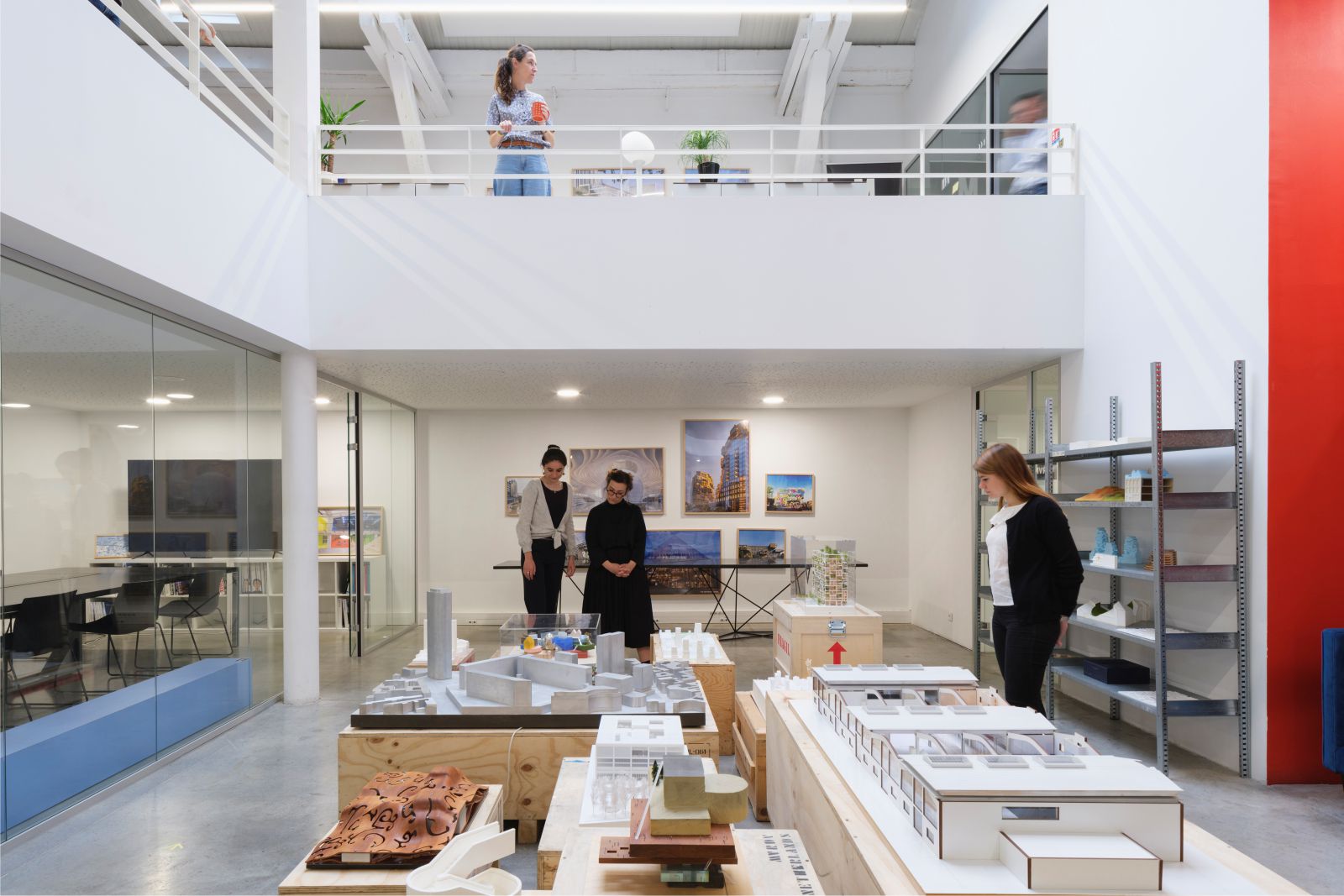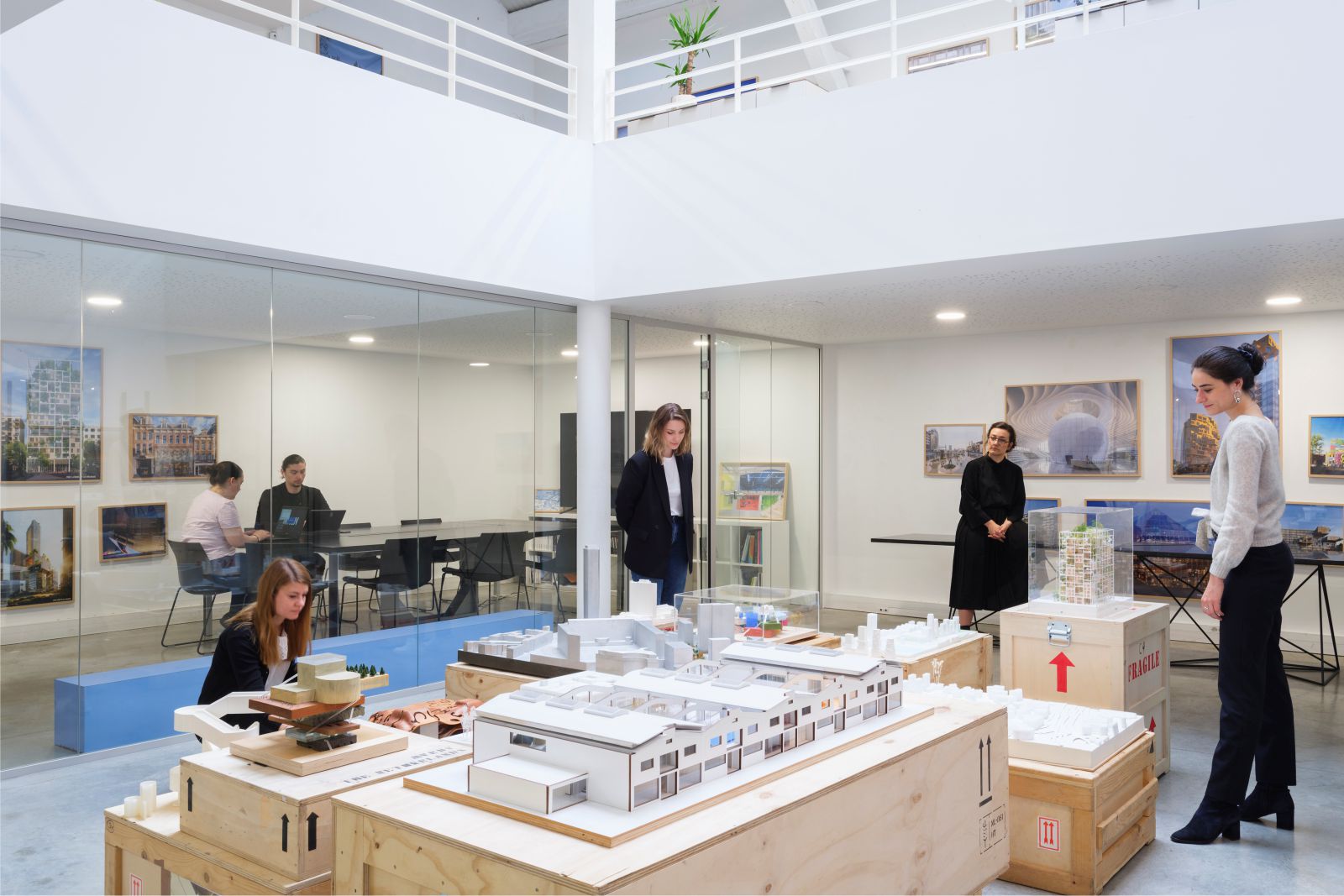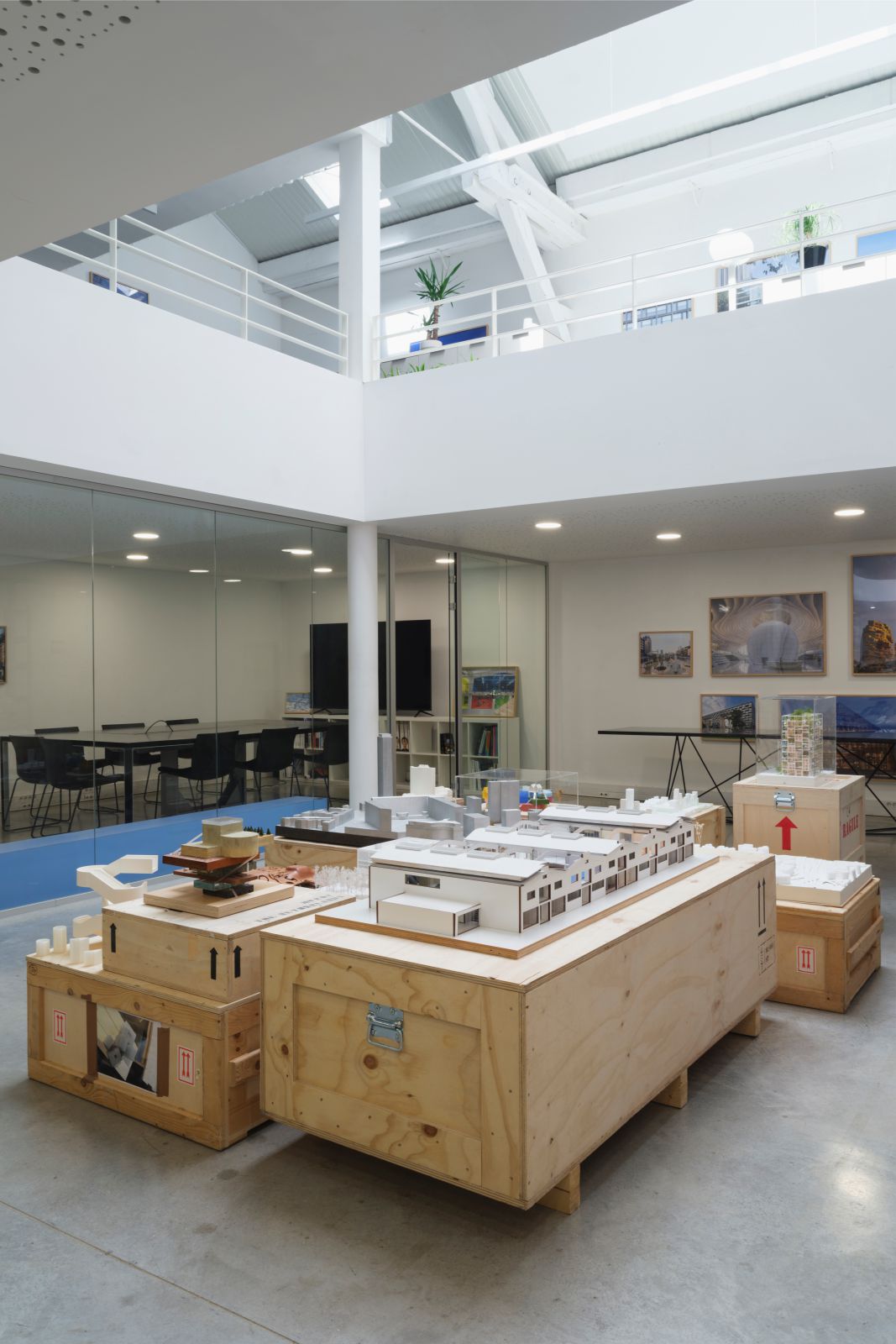“Architecture and urbanism are calls to action” – that is the principle behind MVRDV and The Why Factory’s newest exhibition, Agir, that opens today in the connected spaces of the ArchiLib Gallery and MVRDV’s Paris office. The exhibition takes its name from the French verb meaning “act”, examining the work of MVRDV and The Why Factory through the lens of activism and revealing its capacity to address a wide variety of environmental and social challenges.
In a compact space, over fifty projects are presented, positioning the firm’s French work within their broader oeuvre of international projects and research. Each project is accompanied by a punchy slogan – inspired by the language of activism and protest – that captures the essence of the project, highlighting how each design paves the way for a better future. The exhibition thus shows each project as a manifesto with the ambition to improve people’s lives, to improve its surroundings, to improve the city, to improve the country – to improve the planet.

The ideological underpinning for this framing comes from a “bucket list” developed by MVRDV and The Why Factory, comprising 44 goals for the future of our world, including descriptions such as “biodiverse”, “self-sufficient”, “green”, “collaborative”, “democratic”, and “beautiful”. The work of The Why Factory, the think-tank established at TU Delft by MVRDV founding partner Winy Maas in 2007, forms a symbiotic relationship with the designs of MVRDV, and is therefore presented alongside that of the architecture firm.
The timeline culminates in (w)Ego, a new publication by The Why Factory that researches how individual desires can collaborate and thrive together in dense urban environments, which was launched at the exhibition’s opening ceremony on Thursday June 9th. “For The Why Factory I wanted something that was independent, so we could research without thinking about the immediate needs of an architecture firm, but which nonetheless could help inform the future,” says Winy Maas.


The projects are printed in chronological order on a 78-metre-long fabric curtain that is tightly folded into the gallery’s small floorplan. This density of information highlights the intensity of action required to tackle the challenges afflicting society, the environment, and the world at large. To magnify this sense of urgency, the exhibited works are accompanied by graphics on the floor that show the condition of the polar ice caps at various moments in the project timeline.
At the back of the gallery, the exhibition continues into the ground floor of MVRDV’s own Paris office, which will open to the public for the duration of the exhibition. Here, Agir presents models of projects currently in progress in the style of Parisian ateliers d’artistes. The exhibition acknowledges its own place in this timeline, taking steps wherever possible to limit its environmental impact through a circular economy approach.

Among other steps, this approach includes reusing a large part of the fabric curtain in the meeting rooms of MVRDV’s Paris office, and a special curtain railing that can be reshaped and reused after the exhibition. The result is an exhibition that produces almost no waste. Despite the seriousness of its framing, the tone of Agir is, at its heart, optimistic.
In its timeline of architectural designs and research, it shows how architects can fight against global injustices in their work. In doing so, it presents idealistic architecture not as mere utopian speculation, but as a pragmatic possibility. Source by MVRDV.


- Location: Paris, France
- Architect: MVRDV
- Founding Partner in charge: Winy Maas
- Curatorial team: Bertrand Schippan, Javier Arpa Fernández, Jan Knikker Design and Production: Miruna Dunu, Raluca Scheușan, Teresa Papachristou, Jeremy de Hoop, Joost Moolenburgh
- Support: Nicolas Land, Caroline Konold, MVRDV Paris Jessica Cullen, Rory Stott, Laurence Souloumiac, Christiane Bürklein, MVRDV NEXT, MVRDV Support
- Special thanks to / an exhibition hosted: Galerie ArchiLib
- Year: 2022
- Photographs: Juan Jerez, Courtesy of MVRDV




